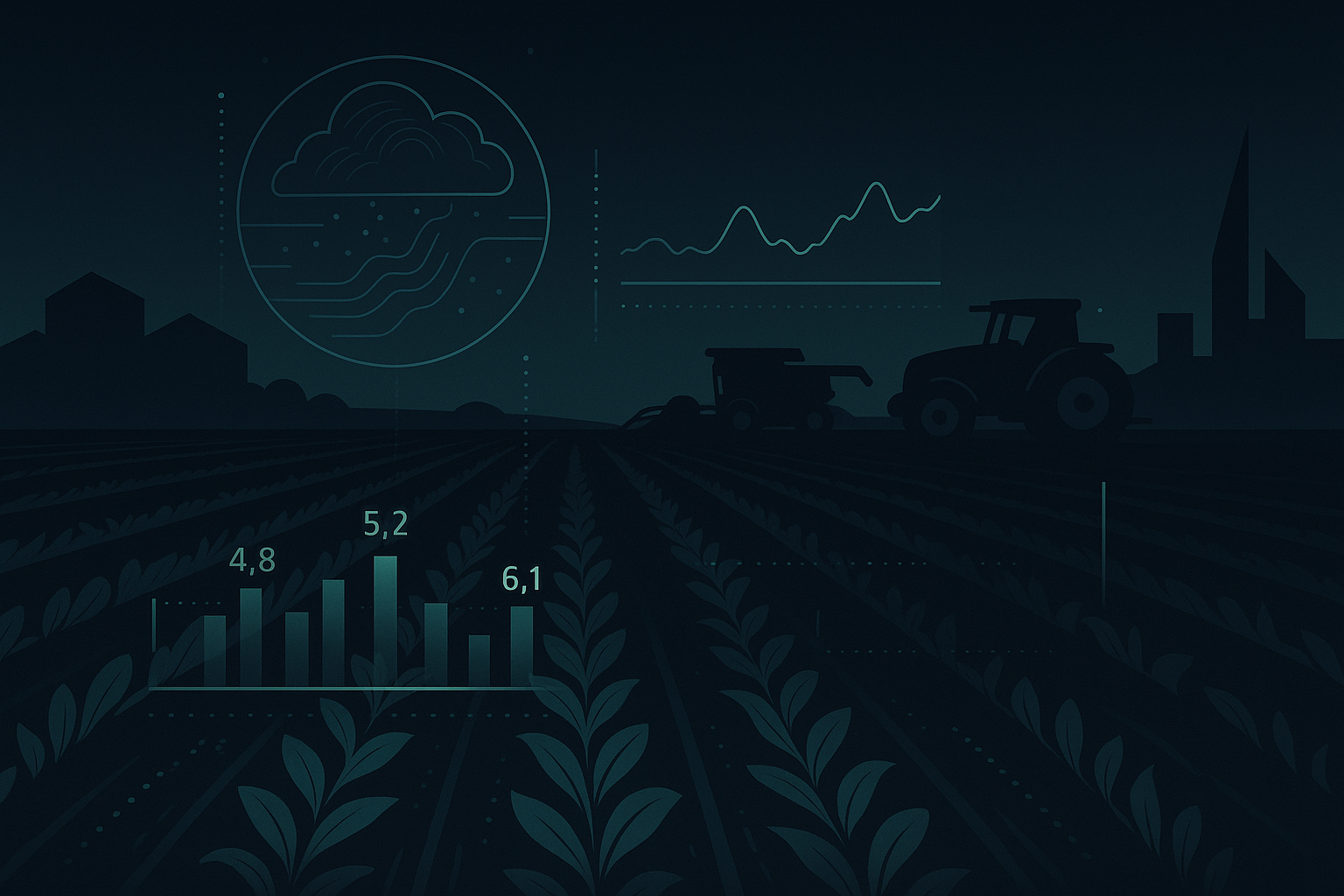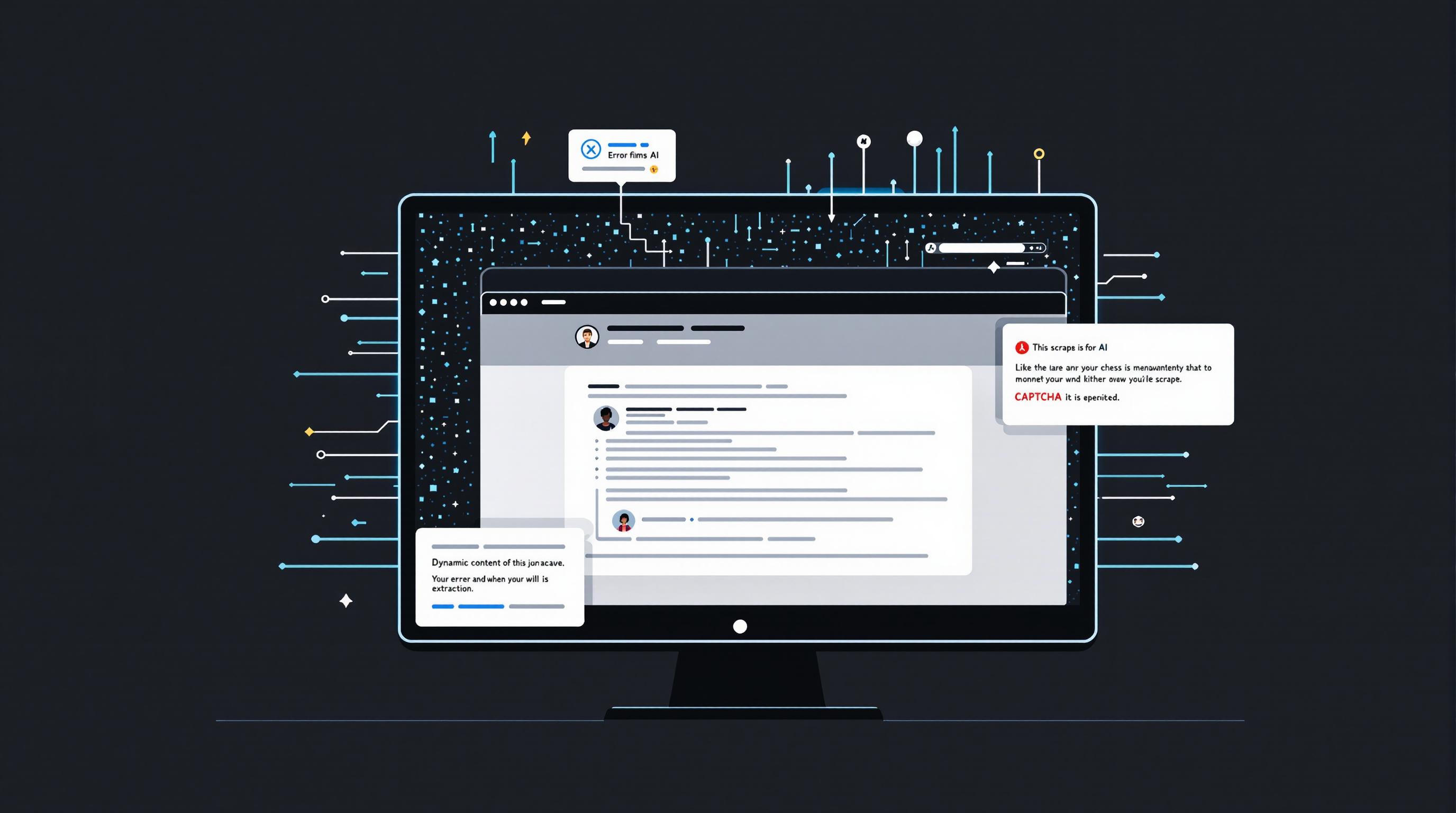Want to make the most of your web scraping efforts? The secret lies in not just collecting data, but storing and managing it effectively. Here's a quick breakdown:
- Why it matters: Web scraping gathers data, but proper storage ensures it's accessible, secure, and ready for analysis.
- Key storage needs: Scalability, data structure, security, and accessibility.
- Top tools: Scrapy, InstantAPI.ai, and Zyte AI Scraping for data collection; MongoDB Atlas, Snowflake, and Amazon S3 for storage.
- Best practices: Automate pipelines, validate data, and choose the right scraping method (HTML parsing, API integration, or browser automation).
Quick Comparison of Storage Options
| Storage Solution | Best For | Scalability | Query Capabilities | Cost Structure |
|---|---|---|---|---|
| MongoDB Atlas | Real-time, flexible schemas | Horizontal scaling | Rich querying, aggregation | Pay-per-usage |
| Snowflake | Large-scale analytics | Automatic scaling | Advanced SQL analytics | Compute + storage |
| Google BigQuery | Complex queries, big data | Serverless scaling | SQL with ML capabilities | Query-based pricing |
| Amazon S3 | Raw data, archiving | Unlimited | Basic object operations | Storage-based |
Web Scraping Methods
Choosing the right web scraping method is key to maintaining high data quality and ensuring smooth integration with your storage systems.
Main Scraping Methods
Each method works best depending on the website's complexity and how the data will be stored. For static websites, HTML parsing with tools like BeautifulSoup works well. For dynamic, JavaScript-heavy sites, browser automation is better suited. API integration, on the other hand, is perfect for accessing official data sources with structured formats.
| Method | Best For | Storage Considerations |
|---|---|---|
| HTML Parsing | Static websites, structured data | Lightweight, easy database export |
| API Integration | Official data, real-time updates | Structured, easy to integrate |
| Browser Automation | Dynamic, JavaScript-heavy sites | Higher resource use, requires cleaning |
HTML parsing is efficient for simpler tasks, while browser automation handles more complex, dynamic content but needs additional resources. Once you've picked the right method, focus on selecting tools that fit your storage and integration needs.
Top Scraping Tools
Modern scraping tools make it easier to extract and store data efficiently. For example, Scrapy offers robust features for large-scale operations, including support for various storage formats and backends. InstantAPI.ai provides a no-code solution for quick data extraction and integration. Zyte AI Scraping uses AI to adapt to website changes, reducing the need for extensive preprocessing.
When choosing a tool, consider the following:
- Data Format Compatibility: Ensure the tool's output works with your storage system.
- Scalability: The tool should handle increasing data volumes without issues.
- Export Options: Look for direct exports to platforms like databases or cloud storage.
These factors help streamline your workflow, from data collection to storage, while keeping technical challenges to a minimum.
Data Storage Options
After scraping data, choosing the right storage solution is crucial for efficient management and analysis. Different storage systems come with their own strengths, depending on your needs.
Cloud Database Systems
Cloud databases are great for storing scraped data, thanks to their scalability and flexibility. For example, MongoDB Atlas handles unstructured and semi-structured data using a document-oriented approach. Amazon DynamoDB, on the other hand, provides real-time performance and auto-scaling to handle varying data loads.
Key benefits of cloud databases include:
- Easy integration with scraping tools
- Cost-efficient solutions tailored to your data size
- Automatic scaling to match your workload
While cloud databases are ideal for real-time and flexible storage, other options like data warehouses and file systems are better for large-scale analytics or raw data storage.
Data Warehouses and File Systems
Data warehouses are built for large-scale analytics. Snowflake, for example, separates compute and storage, allowing flexible scaling to handle fluctuating workloads efficiently.
Google BigQuery is another strong option for analyzing scraped data, offering federated queries that let you analyze data across multiple sources without needing to relocate it.
For raw data storage and archiving, services like Amazon S3 and Google Cloud Storage are excellent choices. They work well as intermediate or long-term storage solutions.
Storage System Comparison
| Storage Solution | Best For | Scalability | Query Capabilities | Cost Structure |
|---|---|---|---|---|
| MongoDB Atlas | Real-time data, flexible schemas | Horizontal scaling | Rich querying, aggregation | Pay-per-usage |
| Snowflake | Large-scale analytics | Automatic scaling | Advanced SQL analytics | Compute + storage |
| Google BigQuery | Complex queries, big data | Serverless scaling | SQL with ML capabilities | Query-based pricing |
| Amazon S3 | Raw data storage, archiving | Unlimited | Basic object operations | Storage-based |
"The key to successful data storage lies in aligning your storage solution with your project's specific needs and objectives." - Industry Expert
When deciding on a storage solution, think about factors like data volume, the type of queries you'll run, and your budget. For instance, if you need frequent updates and real-time access, MongoDB Atlas is a solid option. But if your focus is long-term analysis, Snowflake might be a better fit due to its advanced analytical features.
Choosing the right storage is a critical step in creating an efficient scraping pipeline, which we'll dive into next.
sbb-itb-f2fbbd7
Creating a Scraping Pipeline
Building a scraping pipeline requires thoughtful planning and coordination of tools to ensure smooth data collection and storage.
Pipeline Structure
An effective scraping pipeline has three main parts: data extraction, processing, and storage. Apify Storage, with its cloud-based system, automatically scales to meet your needs. Pairing it with storage platforms like MongoDB Atlas or Snowflake ensures smooth and efficient data handling. Meanwhile, Zyte AI Scraping uses a distributed setup to manage large-scale tasks, boasting a 99.9% success rate.
Key elements of the structure include:
- Data validation checkpoints
- Mechanisms for error handling and recovery
- Load balancing to manage traffic
Once the structure is set, the next step is integrating the tools that make the pipeline work.
Tool Integration Steps
InstantAPI.ai simplifies integration with various storage platforms through its Enterprise API, making it ideal for large-scale projects.
1. API Configuration
Set up API endpoints and secure authentication tokens. For example, to connect with MongoDB Atlas, you'll need secure connection strings and proper access permissions.
2. Data Transformation
Process and validate the scraped data. This step ensures uniformity across records and handles different data formats.
3. Storage Integration
Link your pipeline to a storage solution. For instance, users of Airbyte report cutting integration time by 60% when connecting multiple data sources to their data warehouse.
Pipeline Automation
Automation ensures consistent scraping while saving resources. Take ScrapeHero Cloud, for example - it manages over 100,000 daily tasks with a 95% success rate using automated scheduling.
| Automation Feature | Purpose | Impact |
|---|---|---|
| Task Scheduling | Controls scraping frequency | Cuts server load by 40% |
| Load Balancing | Spreads requests evenly | Boosts success rate by 30% |
| Error Recovery | Manages failed attempts | Improves data completeness by 25% |
"Web scraping is the process of collecting unstructured and structured data in an automated manner. The key to success lies in building resilient pipelines that can adapt to changing conditions." - Zyte, "What is Web Scraping?"
Users of Zyte API have seen a 70% drop in maintenance time after adopting its AI-powered scraping tools.
With automation in place, the next step is ensuring the pipeline runs smoothly and scales effectively.
Implementation Guidelines
To make web scraping and storage integration work effectively, focus on key areas like data preparation, scalability, and quality control. These details ensure your system runs smoothly and delivers reliable results.
Data Preparation
Getting your data ready is the first step to successful scraping. Clean, structured data can save time and money. For example, InstantAPI.ai's Enterprise API service shows that processes like deduplication, format standardization, and field normalization can cut storage costs by 40%.
| Stage | Process | Impact |
|---|---|---|
| Validation & Type Conversion | Remove duplicates, normalize formats, and standardize data types | Cuts storage needs by 25-30% and boosts query speed by 45% |
| Missing Data | Handle null values and incomplete records | Improves data reliability by 35% |
Once your data is cleaned and organized, the next challenge is managing large volumes efficiently.
Large Data Management
Handling massive datasets requires smart strategies to keep performance high. Tools like Apache Spark can process over 1TB of data up to 100 times faster than older systems.
Here are some tips for managing large datasets:
- Use data partitioning to speed up queries.
- Apply compression techniques to save on storage costs.
- Leverage Redis caching for frequently accessed data, cutting response times by as much as 80%.
With scalability in place, the final step is ensuring the data you collect is accurate and reliable.
Data Quality Control
Data quality checks are essential to make sure your scraped data is trustworthy and useful. For instance, Zyte API uses automated validation to help companies achieve 99.9% data accuracy while staying compliant with legal standards.
Key areas to focus on for quality control:
- Privacy Compliance: Follow GDPR and CCPA guidelines when handling personal data.
- Validation Rules: Use automated scripts to check for consistency and fill in any gaps.
- Error Handling: Implement retry mechanisms with exponential backoff using tools like Celery to address failed scraping attempts.
Organizations using tools like Talend for managing data quality report a 75% drop in data errors and a 60% reduction in manual validation efforts.
Conclusion
The combination of web scraping and data storage has made huge strides, thanks to AI and automation. Companies using these tools have reported measurable benefits, like cutting inventory costs by 25% and boosting sales by 15% within just six months. Tools such as OxyCopilot highlight how these technologies tackle major challenges, with 95% of businesses experiencing disruptions within 24 hours of parsing issues.
Today’s methods prioritize scalability and efficiency. For example, InstantAPI.ai's Enterprise API service shows how AI-driven tools can simplify data workflows while keeping quality intact. By focusing on proper data preparation and storage, businesses have been able to cut costs by as much as 40%.
As these technologies continue to evolve, more organizations are turning to automated, intelligent solutions that meet changing business needs while staying compliant with data privacy rules. The emphasis remains on improving efficiency and ease of use in data integration.
With advanced scraping tools and smarter storage options, businesses can make better data-driven decisions. These improvements in data quality, automation, and storage optimization are transforming how companies gather, store, and use their data. This progress is making even complex data integration tasks easier to handle.


